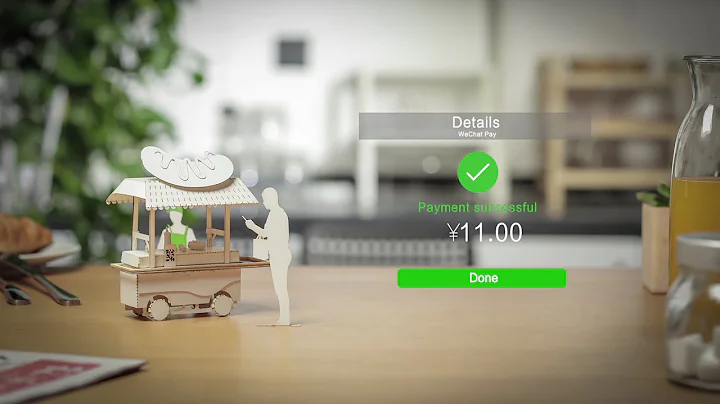
Author: Shilian Assessment | First release: Value Territory WeChat public account
In recent years, my country's real estate market is undergoing significant changes, not from the "golden age" to the "silver age", but from the "increase From the "Quantity Era" to the "Stock Era"; under this important background, real estate leasing and similar leasing economic behaviors have gradually become an important form of real estate asset management , and the demand for evaluation of real estate rental prices has also grown.
In actual valuation practice, such as state-owned projects and special purpose projects, two valuation methods need to be used; or in order to meet the needs of customers, we often need to include the rental price of buildings and land in the real estate rental price evaluation. Split it out.
This article briefly sorts out and conducts a preliminary analysis of the common methods of real estate rental price evaluation, the concerns of rental price evaluation, and rental price apportionment.
Real estate rental price definition
Real estate rental price, usually called rent, is the amount paid by the lessee to the lessor when the owner of the house or the owner of the land use right acts as a lessor and leases his real estate to the lessee.
/
Commonly used evaluation methods for real estate rental prices
According to the "Real Estate Valuation Specifications" (GB/T 50291-2015), the common methods for real estate evaluation include comparison method, income method , cost method , hypothesis development method and Benchmark land price correction method , each valuation method has its applicable valuation objects and the conditions required for valuation.
Currently, the commonly used evaluation methods for real estate rental price evaluation are mainly comparative method, income method and cost method. The three evaluation methods are analyzed below.
1. Comparison method refers to a method that compares the appraisal object with similar real estate that has been traded recently at the value time point, and makes appropriate corrections to the known prices of these similar real estates to estimate the objective and reasonable price or value of the appraisal object. .
The comparison method is applied in evaluating rent, and the comparative example that can be selected should be the real estate used for rent. The estimated rent is obtained by comparing factors such as location, physical objects, equity, and market to the rent of comparative examples. The selected comparison example should be consistent or similar to the content of the lease contract (such as the length of the lease, payment method, responsibilities) and other contract contents of the object being evaluated. The formula is:
Monthly rent comparison unit price = Comparable instance monthly rent unit price Leasing cases that are active in the regional leasing market are easier to obtain.
2. The income method is a method that predicts the net income of the appraisal object in the future years, uses the rate of return to discount the to the value point, and adds it to obtain the value or price of the appraisal object.
The income method is applied to evaluate rent, and two evaluation ideas can be used, namely the value conversion method and the income residual method.
① value conversion method selects an appropriate valuation method to calculate the market value of the valuation object, then determines the rate of return or capitalization rate of the valuation object, analyzes and predicts the change trend of the future rental price of the valuation object, and finally uses the back calculation formula of the income method , to obtain the rental price of the valuation object. The premise for using this method is that the real estate is a going concern, and its future risk and return changes can be predicted.
The general formula of the regular income method is:

② The income residual method starts from the perspective of the highest rent that the lessee is willing to pay, and deducts the operating expenses and taxes incurred in normal operations based on the normal operating income that the lessee can obtain from renting the real estate. , reasonable profit, and the method of using the balance as the rental price of the valuation object. The prerequisite for using this method is that you need to have a full understanding of the operations of the relevant industries and be able to reasonably and objectively determine the income, expenses and normal operating profits of the industry. The specific formula is:
Residual rental income = normal operating income - total operating expenses - Reasonable operating profit of the industry
3. The cost method is a method that obtains the price of each component of the evaluation object at the time of value, and then adds up the prices of each component to obtain the evaluation object.
The cost method is used in evaluating rent, also known as the factor composition method. It is to actually calculate the cost of each factor based on the components of the house rent. After adding them up, the trial rent is calculated, and then revised according to the newness, orientation, level, etc. of the house. , a method of finding house rent. This is a practical approach when there is not enough rental information available that is similar to the valuation object. This method starts from the lowest price that the lessor is willing to accept. Usually the rent is composed of the following eight factors, namely depreciation fee , maintenance fee, management fee, interest, land rent, insurance premium, profit, and tax . The formula is:
Cost rental price = depreciation + maintenance fee + management fee + interest + ground rent + insurance premium + profit + tax
/

Points of concern in rental price evaluation
1. Determine the rental connotation. When evaluating real estate rental prices, we must first pay attention to the connotation of rent. If the connotation is inconsistent, the rent will vary greatly. The connotation of rent includes: whether the rent includes value-added tax; whether the rent takes into account supporting appliances and furniture; whether the rent includes property management fees, air-conditioning usage fees, etc.; the rent is reflected in daily rent, monthly rent or annual rent;
2. full rent Differences between subletting and . Real estate leasing is generally divided into two types: en bloc leasing and sub-leasing. En bloc leasing means that the lessor rents the entire house to the same lessee, while sub-leasing is a common leasing situation in the market. Its main characteristics are scattered leasing and the lease is shorter. Generally, it takes 1-3 years. In the case of scattered renting, the lessor will decorate the public parts of the house, and the lessee can decorate the interior according to its own business characteristics and preferences. Compared with renting in whole, the rent will be more favorable. In practical operation, it is necessary to comprehensively analyze the difference between the overall rent and sub-lease of similar properties on the market, and determine the discount rate for the entire lease based on the actual situation of the project.
3.Lease length, rent payment method. The lease duration is generally divided into long-term lease, short-term lease or temporary lease. Generally, the impact of lease duration on rent is: the rent of long-term rental units is less than the rent of short-term rental units, and the rent of short-term rental units is less than the rent of temporary lease units. Rent payment methods are generally divided into annual rent payment, one-time payment of the total rent during the lease period, etc. One-time payment will give a discount or discount on the rent.
4.Focus on the impact of real estate facilities and equipment on rent. In the rental of industrial plants and logistics warehouses, common facilities and equipment are rented together with the house, such as cranes, cold storage equipment , etc. When evaluating, you need to pay attention to whether such facilities and equipment have an impact on the evaluation results. If so, they need to be included in the report. make disclosures.
5. pay attention to the rental increase rate . In practice, in order to meet customer requirements, it is often necessary to reasonably determine the rental increase rate during evaluation. There are generally three situations between rent and increase rate: the initial rent base is low, but the annual increase rate is high; the early rental base is high, but the annual increase rate is high. Low; rent and increase rate are determined according to market conditions and are relatively moderate. Based on experience, the author concludes that the common annual increase rate for real estate rents is 2%-5% annually, or 6%-8% every two years.The specific annual growth rate needs to be determined based on location and property conditions.
6. refers to the government guidance rental standard . In order to regulate the real estate rental market, some developed first- and second-tier city governments will regularly publish rental guide prices for various types of real estate. Such guided rents have certain reference significance. By comparing rents in various regions, the extent of rental differences in various regions can be determined; through By comparing rents in the same area in each year, the annual rent growth level can be obtained. Since these data are officially announced, they are more convincing and helpful in testing the rationality of the evaluation results.
/
Building and land rental price apportionment
1. Basic idea
During daily real estate rental price evaluation, we often encounter some customers who need to apportion the rental price of buildings and land. Everyone is used to it. The method is to obtain the ground rent of the land through the comparative method, and then subtract the ground rent from the real estate rental price to obtain the rental price of the building. This approach is too simple and crude, and does not take into account the value-added income of the land or building part when the real estate and land are integrated. It is very flawed and unreasonable.
The author believes that the following two methods of operation can be considered:
① uses the rate of return to calculate . Specifically, the building value and land value are first obtained, and then the building return rate and land return rate are obtained through scientific calculation methods. The two are multiplied to obtain the net income of the building and land respectively, and then the net income is restored to Rent, thereby apportioning the rental price of land and buildings.
② Under certain conditions, the rental price of land or buildings can be allocated according to the proportion of the value of the land or the value of the building to the value of the real estate. The two allocation methods are explained below.
2. Apportionment based on rate of return
First, obtain the value of the land or building through the cost method or comparative method, then obtain the net income of the land or building based on the respective rate of return, and then restore the net income to rent. The key point of this method is to obtain the return rate of for .
According to the real estate valuation theory, the rate of return is generally divided into three types, namely comprehensive rate of return, building rate of return and land rate of return. Commonly used methods to obtain the rate of return include the following: ① Pure income and price ratio method; ② Safe interest rate plus risk adjustment value method; ③ Comprehensive ranking and insertion method of investment risk and investment return rate; ④ Investment compound rate of return method.
Based on practical experience, the author concluded that the general real estate rate of return can be obtained using the above four methods. The land rate of return can be determined with reference to the benchmark land price revised system recently released by the government of the assessment area, while the building rate of return is determined by determining land, Under the premise of real estate return rate, it can be calculated using the return rate calculation formula. Based on practical experience, the author finds that generally the rate of return on buildings will be 2%-3% higher than the rate of return on land.
3. Apportionment based on value
According to the theory that the higher the income, the higher the value, the income is directly proportional to the value of the real estate. This method is generally suitable for industrial properties with a higher degree of development and a higher floor area ratio, such as office buildings and factories in industrial factories. The specific operation of
is as follows: use the comparison method to obtain the real estate rent, and then use the cost method to obtain the value of the land and buildings. According to the proportion of the land or building value to the real estate value, the real estate rent is apportioned. This method is not applicable to all types of real estate, and the specific situation needs to be analyzed when choosing it.
In actual operation, both the combined rent of house and land and the land rent can be obtained by collecting market cases and correcting them. However, since a simple building cannot generate income alone, it can only be obtained by apportioning it in a relatively reasonable way. The utility value of real estate is formed by the joint action of land and buildings. How to apportion the value-added income formed after real estate development and construction? Whether the real estate and real estate are occupied separately, or the real estate and land are separated and apportioned, is still a question in real estate valuation practice. difficulties.The apportionment ideas provided by the author are for reference only. In actual operation, it should be comprehensively analyzed and scientifically demonstrated based on the specific conditions of the project.
/
Conclusion
In an era dominated by stock, the core function of real estate finance is to realize the realization and investment of assets. Therefore, real estate leasing and similar leasing economic activities have gradually become an important form of real estate asset management, and the demand for evaluation of real estate leasing prices has also increased. is growing day by day. As professional evaluators, we must lay a solid foundation, seize opportunities, and meet challenges.
/
Author of this article: Shilian Appraisal , the country's leading land real estate and asset appraisal agency , has a strong team of appraisers and holds qualifications from international societies such as RICS, MAI, and HKIS. It is committed to continuing to lead the profession and taking a forward-looking perspective. In-depth interpretation of the real estate market, the content is first released on the public account of Value Territory, and the original content is constantly exciting! If you want to reprint this article, please click [Reprint Instructions] to view the reprint rules.





















